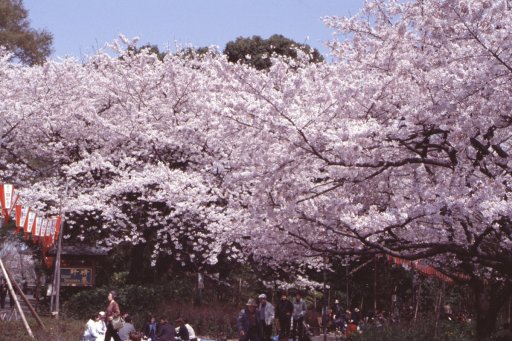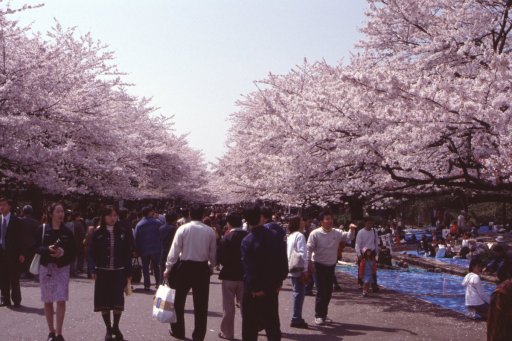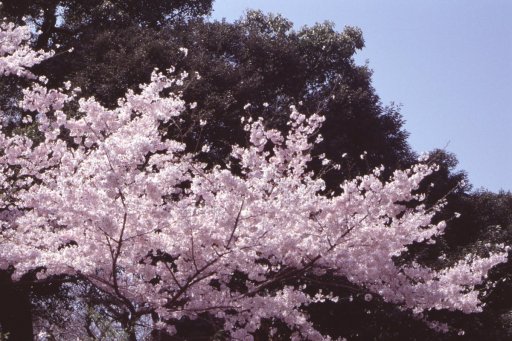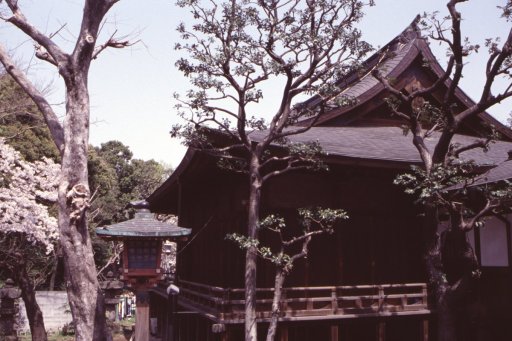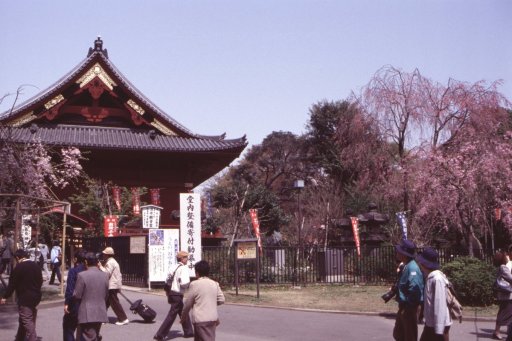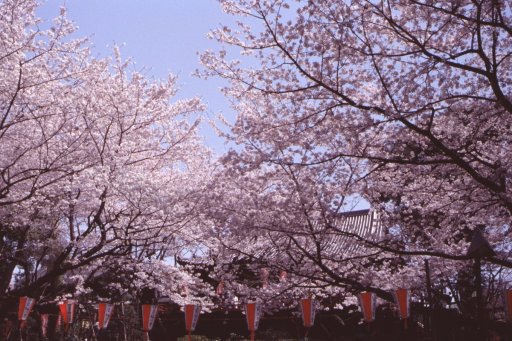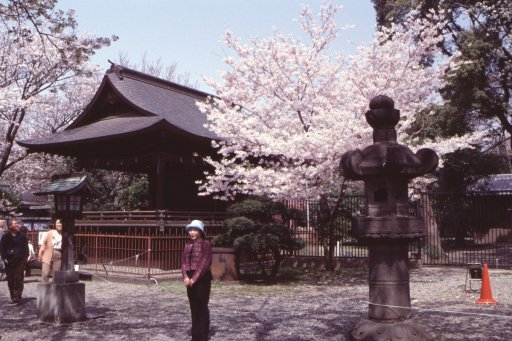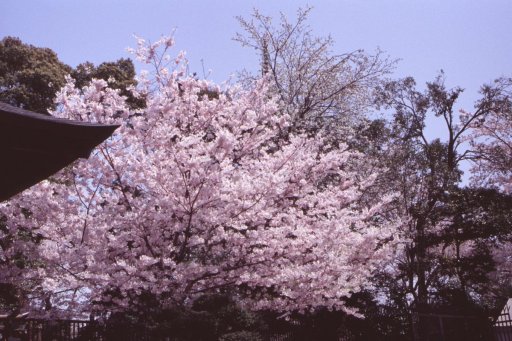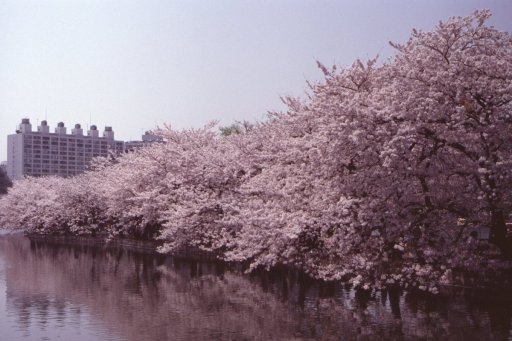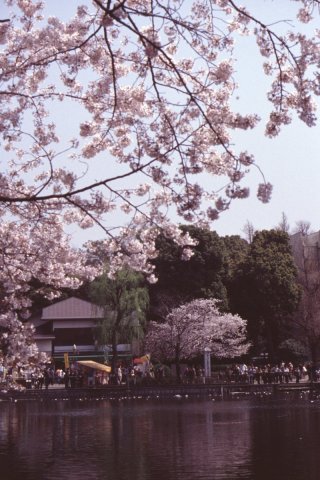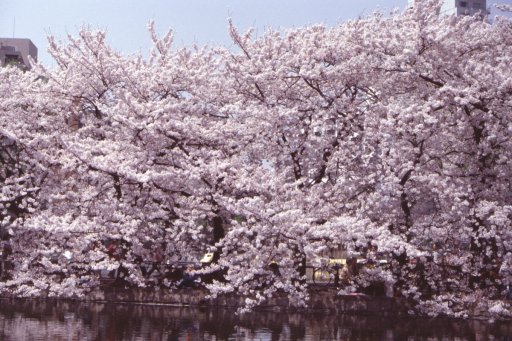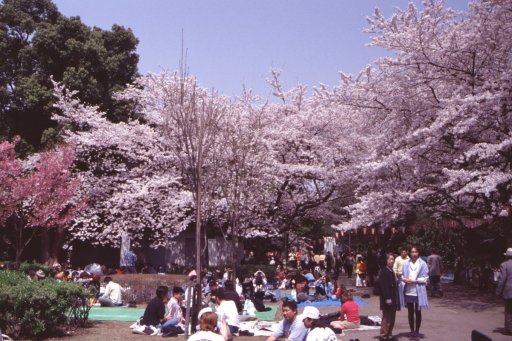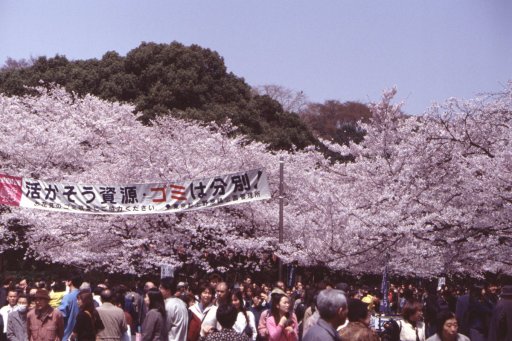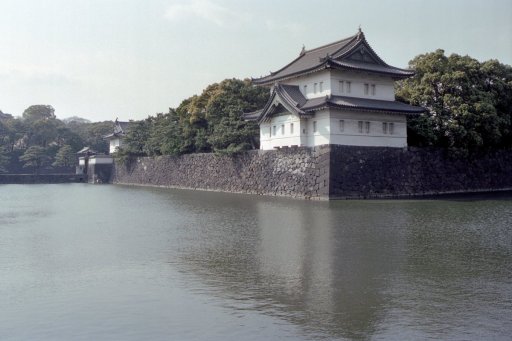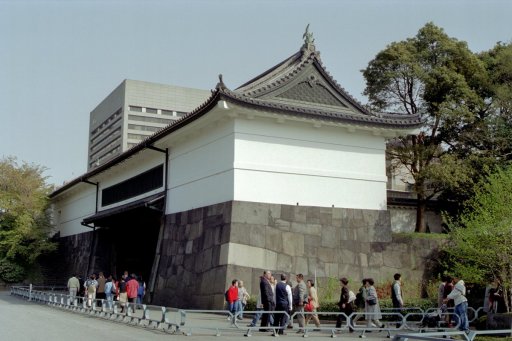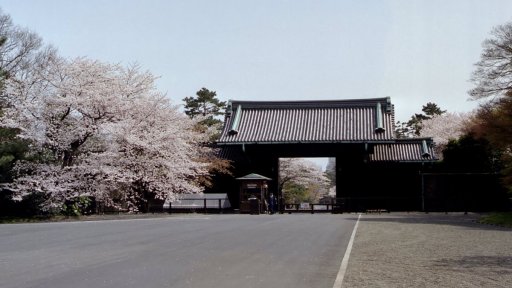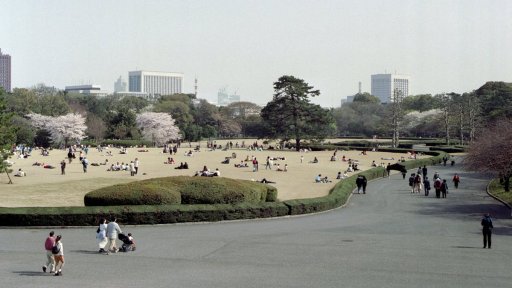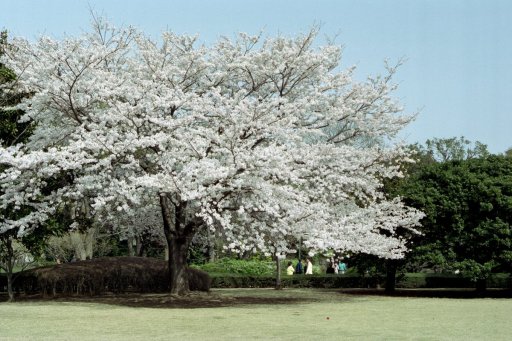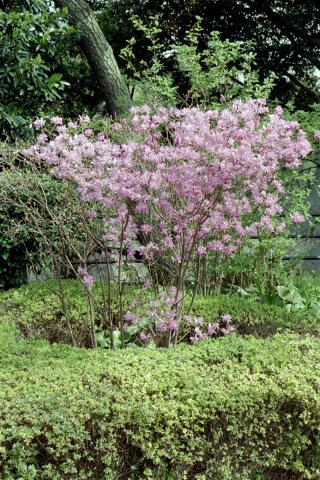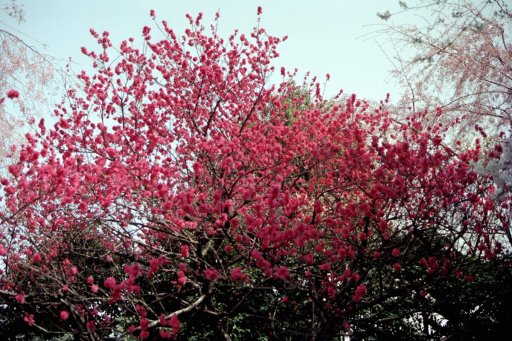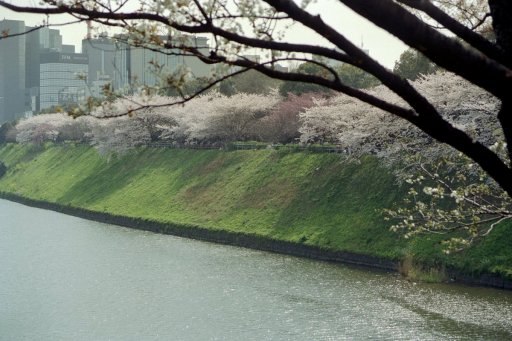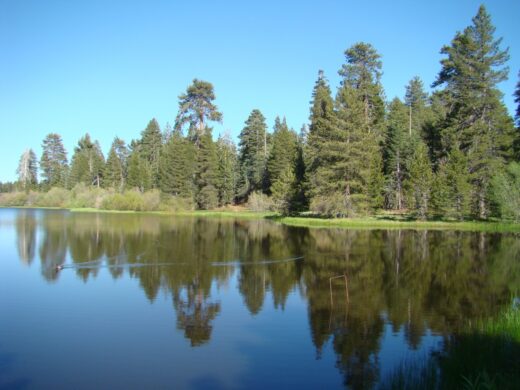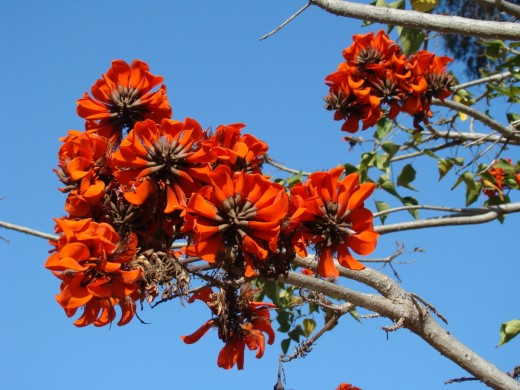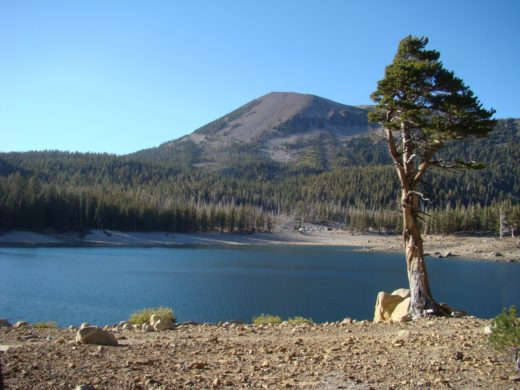Springtime in Japan part 1
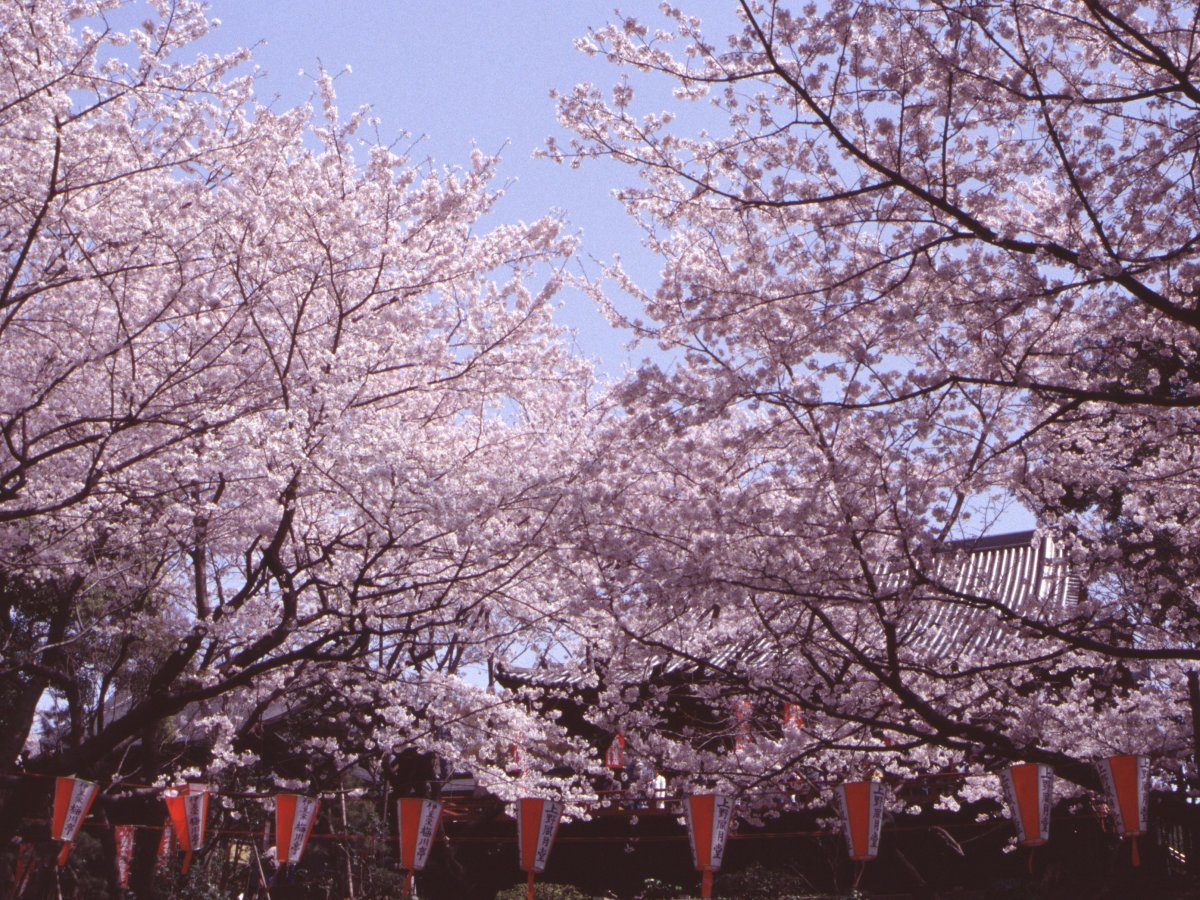
When I was working for Hewlett-Packard Company I had a number of business trips to Japan. One of them was in April 2000 and happened to hit the cherry trees in bloom. While work did keep me busy I managed to get away to see for myself if the cherry blossoms live up to what people say about them.
I set out for one of the best known areas for viewing cherry blossoms which is Ueno Park located in Taito City, Tokyo. This area has been famous for its cherry blossom ever since feudal times and I was greeted with a profusion of the blossoms near the entrance the park.
These continued as far as can be seen. There are more than 1000 cherry trees in the park.
The cherry bloom is short-lived and they are only in full bloom for around one week.
The area of Ueno Park once housed the Kan’eiji Temple which was established in 1625 and was a great complex. During a civil war in 1868 the temple was destroyed and in 1876 its grounds were converted into a public park. A few buildings survived one of which is Kiyomizu Kannon of 1631.
Another side of the Kiyomizu Kannon temple. The structure is a copy of the famous Kiyomizu Temple in Kyoto but on a much smaller scale.
The roof of the Kiyomizu Kannon temple can be seen through the cherry blossoms.
This is near the Toshogu Shrine. This building has Kagura-den which is a stage where music is played during festivals. However on this day people were more interested in having their picture taken with cherry blossoms in the background.
Sakura is the name for the Japanese cherry blossom tree. The word ‘sakura’ appeared in the early 8th Century and is contained in Japan’s oldest existing collection of poetry, the Manyoshu. ‘Sa’ was written as the word ‘god’ and particularly referred to the god of rice paddies. ‘Kura’ represented a pedestal used to honor a god with offerings of food and sake. When cherry blossoms bloomed, it was a sign that the god had come down from the mountains and it was time to plant rice.
Shinobazu Pond is a large pond on the southwest corner of Ueno Park. A small portion of the pond can be seen here.
Another view across the pond.
A closer view of the cherry blossoms.
The Japanese have an ancient custom known as “hanami” which means flower viewing. While the exact customs and activities have changed over the centuries, the basic principle remains the same. People meet with family and friends to eat and drink and observe the beauty of the magnificent but short-lived cherry tree flowers.
One last look at the Ueno Park cherry blossoms before moving on to another area.
Just several train stops from Ueno Park is the Tokyo Imperial Palace. The palace grounds were previously occupied by the Edo Castle in the 17th–19th centuries. Moats and walls surround the imperial palace and on the corner of the wall is the tatsumi-yagura (also known as sakurada-yagura) keep.
The Otem Gate is the East entrance to the palace grounds.
The Kikyomon Gate is where visitors to the Imperial Palace and workers come in and out.
The Tokyo Imperial Palace is the main residence of the Emperor of Japan and the royal residential compound is closed to the public most of the year. This is the Inui Gate one of the gates leading there.
Honmaru was the place where the Shogun and government officials carried out political affairs. After this was destroyed in a fire in 1863 it was not rebuilt. The place Honmaru was located is now a large open area.
There were some large blooming trees there,
some small ones,
and other types of spring colors.
We leave with one last look at cherry blossoms above the moat.
However our tour is not over and is continued in the Springtime in Japan part 2 post.
More Information:
Wikipedia article on Ueno Park
